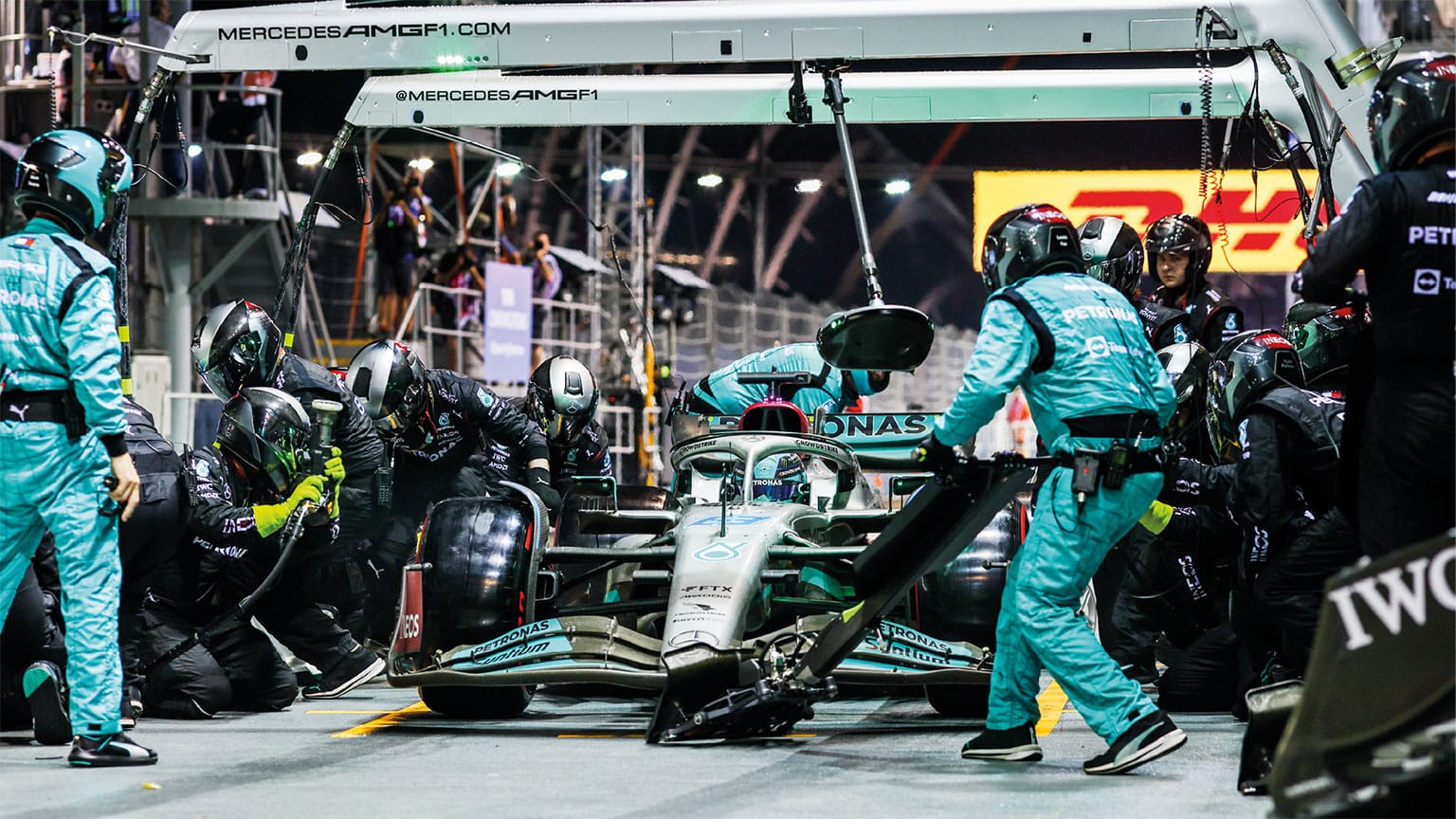Switching from inters to slicks: the crucial strategic tyre call in F1 wet races
Two wet-weather grands prix in Asia forced teams to adapt on the fly, making a change from the usual tyre deg strategies we’ve seen this year. Mark Hughes explains what happened

Russell was the first to blink in Singapore, even if it didn’t quite work out
Getty Images
All conventional tyre deg-dominated strategy went out the window with the rain-affected Singapore and Japanese grands prix. Getting the strategy right was all about when to switch from inters to slicks in Singapore and from wets to inters in Japan. This had a number of interesting strategic side effects.
In Singapore the track was exceptionally slow to dry even after the rain had long-since stopped. The lack of sunlight and wind combined with high humidity all contributes to this trait but it was exacerbated this year by some of the track having been resurfaced but not others. The newly laid section in the first sector was quicker to dry than the old surfaces further into the lap – with Turns 7, 17 and 21 remaining treacherous for a long time. Which meant that even though parts of the track were ready for slicks quite early into the race, they would have been disastrous in those turns. So the track remained imbalanced between the two for about half the race distance. Even after the change to slicks finally became feasible, those problem corners remained.
In a conventional race the biggest factor driving strategic variation between cars is usually the differences chosen for the first stops, which then cascades through the field as everyone reacts. But in Singapore there was almost no variation, because the tyre choice was so stark. Even the safety cars and VSCs which usually trigger at least some of the field to pit were not having an effect here as drivers were resolutely reporting, “No, the track’s not ready for slicks yet.”
“In Japan cars had to start on wets, but it was close to inters”
There was one exception: Mercedes brought in George Russell under the lap 20 VSC for Fernando Alonso’s broken-down Alpine. Russell had little to lose; he’d started from the pitlane after changing a power unit and he’d made little progress through the pack, so difficult was overtaking. He therefore became the guinea pig for the whole field as to when exactly the track might finally surrender to the choice of slicks. This very precise measure afforded by his stop only discouraged any further variation. With the big difference in grip between on-line and off-line, there was virtually no overtaking. No strategic variation and no overtaking put the race in a rare stasis.
Lap 20 proved far too early for George and on his slicks he quickly lost much more than the 10sec saving he’d made by stopping under the VSC. It was lap 28 before he suddenly set the fastest lap of the race so far – the trigger for everyone else to make the change. There was a strategic nicety up at the front, though. Even though slicks were now faster, they were not necessarily so on the first lap, as they took a time to reach temperature. Red Bull left leader Sergio Pérez out until the lap after Ferrari brought Charles Leclerc in. Even without a small delay at Leclerc’s pitstop, Pérez was always set to come out ahead as his warm inters were faster on that one lap than Leclerc’s cold slicks, and so the race order remained unchanged after that.
In Japan the safety car restart required everyone to be on full wets but it was apparent even as they were in that queue that the track would be ready for intermediates almost immediately. The complication was that on the very lap the safety car put out its lights and prepared to unleash the field, the rain was increasing at the far end of the circuit. At the front there was therefore a general reluctance to pit immediately. But at the back there was little to lose – hence Nicholas Latifi and Sebastian Vettel following the safety car in. This worked for them as the rain eased off once more and although they were not immediately setting fast sector times, Vettel would be on the following lap (lap six). This brought most of the rest of the field in on lap seven.
The early stops of Vettel and Latifi bought them many places in the final reckoning, the foundation of their drives to sixth and ninth places respectively.
